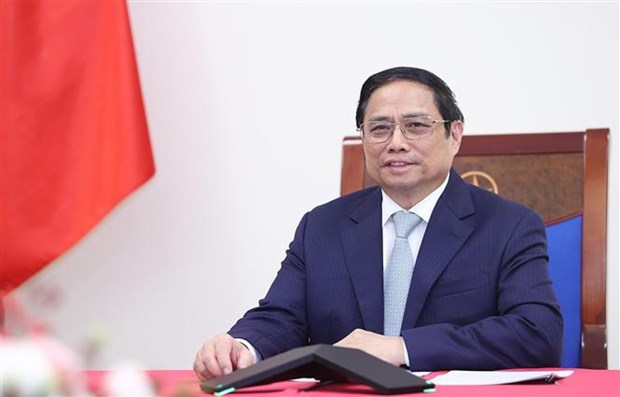
The Government's specialised committee, the Defence Ministry and authorities of the southern provinces of Dong Nai and Binh Phuoc on December 1 handed over the remains of 49 soldiers of Cambodia's united armed forces for national salvation to a delegation of the Defence Ministry and the Royal Cambodian Armed Forces (RCAF).
The Government’s specialised committee, the Defence Ministry and authorities of the southern provinces of Dong Nai and Binh Phuoc on December 1 handed over the remains of 49 soldiers of Cambodia’s united armed forces for national salvation to a delegation of the Defence Ministry and the Royal Cambodian Armed Forces (RCAF).
Addressing the hand-over ceremony at the X-16 area in Binh Phuoc province, Sen. Lt. Gen. Do Can, Deputy Director of Vietnam People's Army (VPA)'s General Department of Politics and Standing Vice Chairman of the Government’s specialized committee, recalled that after the victory of the anti-US resistance war, the Cambodian people hoped to live in peace and national harmony for national construction. But the Cambodian revolution was betrayed by the Pol Pot-Ieng Sary group, which implemented a genocidal policy, killing millions of Cambodians. They also sent troops to the border with Vietnam, attacking Vietnamese localities and killing tens of thousands of innocent Vietnamese.
The Cambodian people along with genuine Cambodian revolutionaries had risen to fight against the genocidal regime. The genuine Cambodian revolutionaries, led by Hun Sen (now the Prime Minister of Cambodia) travelled to Vietnam to build up their forces.
On May 12, 1978, Division 125, the predecessor of Cambodia’s united armed forces for national salvation, was established at Suoi Ram hamlet (Long Giao commune, Cam My district of Dong Nai province) under the command of Hun Sen with Vietnam’s support. Together with other patriotic forces of Cambodia, Division 125 has developed into the Royal Cambodian Armed Forces, which along with voluntary Vietnamese soldiers toppled the Pol Pot administration and saved the Cambodian people and country from genocide.
While performing their duties, 49 Cambodian officers and soldiers died due to injuries in fighting in Cambodia or illnesses, and were buried at the hamlet. The area was later turned into a cemetery and built into a historical site, which is a symbol of the pure and loyal solidarity and friendship bonds between the two nations and armies.
At the request of PM Hun Sen and the wish of relatives of the 49 dead officers and soldiers, the Vietnamese PM agreed to repatriate the remains to Cambodia.
Working teams of both sides have coordinated closely to complete the excavation of the remains to return them to Cambodia.
For his part, Gen. Sao Sokha, deputy commander of the RCAF and commander of the National Military Police, expressed thanks to Vietnam for dedicating the site for the burial of the Cambodian officers and soldiers and for taking care of their graves over the past 45 years./.
 |
| The hand-over ceremony in Binh Phuoc province on December 1 (Photo: VNA) |
Addressing the hand-over ceremony at the X-16 area in Binh Phuoc province, Sen. Lt. Gen. Do Can, Deputy Director of Vietnam People's Army (VPA)'s General Department of Politics and Standing Vice Chairman of the Government’s specialized committee, recalled that after the victory of the anti-US resistance war, the Cambodian people hoped to live in peace and national harmony for national construction. But the Cambodian revolution was betrayed by the Pol Pot-Ieng Sary group, which implemented a genocidal policy, killing millions of Cambodians. They also sent troops to the border with Vietnam, attacking Vietnamese localities and killing tens of thousands of innocent Vietnamese.
The Cambodian people along with genuine Cambodian revolutionaries had risen to fight against the genocidal regime. The genuine Cambodian revolutionaries, led by Hun Sen (now the Prime Minister of Cambodia) travelled to Vietnam to build up their forces.
On May 12, 1978, Division 125, the predecessor of Cambodia’s united armed forces for national salvation, was established at Suoi Ram hamlet (Long Giao commune, Cam My district of Dong Nai province) under the command of Hun Sen with Vietnam’s support. Together with other patriotic forces of Cambodia, Division 125 has developed into the Royal Cambodian Armed Forces, which along with voluntary Vietnamese soldiers toppled the Pol Pot administration and saved the Cambodian people and country from genocide.
While performing their duties, 49 Cambodian officers and soldiers died due to injuries in fighting in Cambodia or illnesses, and were buried at the hamlet. The area was later turned into a cemetery and built into a historical site, which is a symbol of the pure and loyal solidarity and friendship bonds between the two nations and armies.
At the request of PM Hun Sen and the wish of relatives of the 49 dead officers and soldiers, the Vietnamese PM agreed to repatriate the remains to Cambodia.
Working teams of both sides have coordinated closely to complete the excavation of the remains to return them to Cambodia.
For his part, Gen. Sao Sokha, deputy commander of the RCAF and commander of the National Military Police, expressed thanks to Vietnam for dedicating the site for the burial of the Cambodian officers and soldiers and for taking care of their graves over the past 45 years./.
(Source:VNA)





